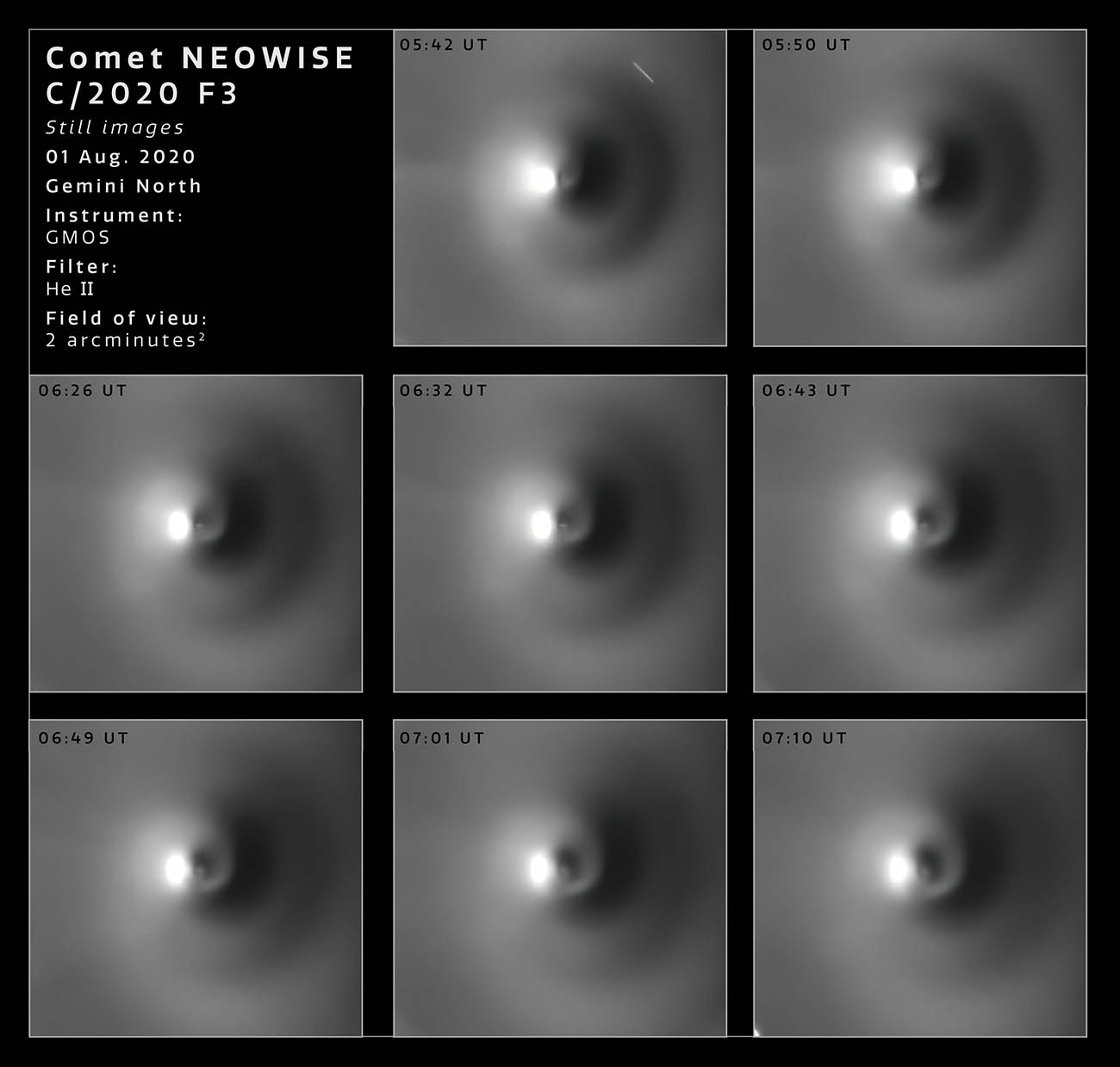NOIRLab: A Dizzying Show by Comet NEOWISE

Images of Comet NEOWISE obtained with Gemini North on Hawai‘i’s Maunakea on the night of 1 August 2020. This sequence was obtained using the Gemini Multi-Object Spectrograph (GMOS) with the 468/8 nm filter and digitally enhanced using a dedicated algorithm. The field of view is 2 arcminutes across. Credit: International Gemini Observatory/NOIRLab/NSF/AURA/M. Drahus/P. Guzik
Gemini Observatory images reveal striking details of our recent celestial visitor’s rotation
When Comet NEOWISE (C/2020 F3) sped through the inner Solar System during the middle of 2020, astronomers and the general public watched in awe as this “dirty snowball” shed gas and dust into space, producing a striking show visible to the naked eye. Close-up observations, led by Michal Drahus and Piotr Guzik of Jagiellonian University in Krakow, used the international Gemini Observatory, a Program of NSF’s NOIRLab, to observe the materials escaping from the comet over time. One set of observations, obtained on 1 August 2020 from the Gemini North telescope on Hawai‘i’s Maunakea, displays a spiraling stream of molecular gas that reveals the rotation of the comet’s nucleus. The timelapse sequence, compressed to only a few seconds, represents about one fifth of the approximately 7.5-hour rotation period of the comet.
The observations, obtained under a research program to explore the rotational dynamics of the comet, took place over several evenings, and were limited by the comet’s relatively close proximity to the Sun and the resulting short observing windows. The Gemini observations allowed the researchers to determine the rotation of the comet to excellent accuracy and to look for changes in the rotation rate.
